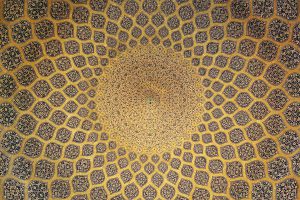A Brief Biographical Sketch of Imām al-Qudūrī
By Z.A. (4th Year Alimah Student, DarusSalam Seminary)
Imām Abū al-Ḥasan Aḥmad b. Muḥammad b. Aḥmad b. Jaʿfar b. Hamdān al-Faqīh al-Qudūrī al-Baghdādī was a great Ḥanafī scholar and jurist. He is famously known as Imām al-Qudūrī.
There are two opinions regarding the origin of Imām al-Qudūrī’s name. One opinion is that he was from a neighborhood in Baghdād that was called Qudūrah. The other opinion suggests that his name refers to one who works selling pots (ar. qudūr).[1]
He was born in Baghdād in AH 362 and grew up in a religious home. His father, Muḥammad b. Aḥmad b. Jaʿfar, was a scholar of ḥadīth. Imām al-Qudūrī memorized the entire Qurʾān at a young age and remained engaged in its recitation thereafter. He was blessed with learning various sciences, such as tafsīr, ḥadīth, kalām, fiqh, and uṣūl al-fiqh.
Imām al-Qudūrī studied the science of jurisprudence (ar. fiqh) under the tutelage of Abū ʿAbd Allāh al-Faqīh Muḥammad b. Yaḥyā al-Jurjānī. And he studied ḥadīth under Shaykh Abū al-Ḥusayn al-Hushabī.
Imām al-Qudūrī had many students. Some of them are Khaṭīb al-Baghdādī, Imām al-Sarakhsī, Qāḍī al-Quḍāt Abū ʿAbd Allāh al-Dāmaghānī, Abū Naṣr, and Imām al-Tannūkhī. Both Khaṭīb al-Baghdādī and Dāmaghānī narrated ḥadīth from him.
Imām al-Qudūrī lived at a time when the science of fiqh was flourishing. Many great scholars came from this period, such as Abū Zayd Al-Dabūsī, Abū Jaʿfar al-Nasafī, and Abū Layth al-Samarqandī. In his time, Imām al-Qudūrī was one of Iraq’s leading scholars. He was distinguished by his penetrating intellect and extensive knowledge in the science of fiqh.
Ibn Kamāl Pāshā ranked and divided the Ḥanafī Madhhab’s scholars into six categories. Imām al-Qudūrī was placed in the category of the mujtahid scholars who are muqallid. These authorities give preference to different opinions (ar. tarjīḥ) within the school.[2]
Imām al-Qudūrī wrote several books in the subject of fiqh. Some of his most famous books include al-Taqrīb, Sharḥ Mukhtaṣar al-Karkhī, al-Tajrīd, and Mukhtaṣar al-Qudūrī.[3] His Taqrīb was written regarding the masāʾil in which there is a difference of opinion between Imām Abū Ḥanīfah and his students. However, al-Taqrib did not contain discussions regarding the school’s evidence. For this reason, he thereafter wrote another version of the work in which he included these discussions.
Al-Tajrīd is another book in fiqh that Imām al-Qudūrī authored. In it he compares the masāʾil on which the Ḥanafīs and the Shāfiʿīs differ.
From all the books he wrote, Mukhtaṣar al-Qudūrī is the work that has been studied by eager students of knowledge for generations. This work is known as “al-Kitāb.” Many have benefitted from it. It contains about twelve thousand masāʾil.[4] This is a classical book of fiqh, which covers masāʾil pertaining to purification, prayer, business transactions, inheritance, etc. His Mukhtaṣar is taught in thousands of Islamic seminaries across the world as a mainstay introductory textbook in the subject of Ḥanafī Fiqh.
This curricular universality is found because of a variety of reasons. The most significant reason is that acceptance comes from Allāh. It comes in the Holy Qurʾān: “My success is only through Allāh.” Many have written similar books, but ultimately Allāh accepted this work.
Mukhtaṣar al-Qudūrī is best suited to introduce students to the subject of fiqh because it includes the primary masāʾil. By perusing its pages, one becomes accustomed to the jurists’ jargon and the book trains one to think like a faqīh.
In his commentary on Hidāyah, Imām Badr al-Dīn al-ʿAynī mentioned that when Imām al- Qudūrī finished compiling his Mukhtaṣar, he went to Makkah to perform the Ḥajj, and he took the book with him. After completing his ṭawāf, he asked Allāh to give him the ability to rectify any errors in his book. Thereafter, he opened the book and flipped through it, page-by-page. He found only five or six places that required editing. This is one of his miracles.[5]
Qudūrī is not just a manual for teaching, it is a referent legal text on which numerous scholars penned commentaries. Marghīnānī is noted to have included it in his own book, al-Hidāyah, wherein he relied on both Qudūrī and al-Jāmiʿ al-Ṣaghīr.
Imām al-Qudūrī passed away in AH 428. He was first buried at his home but was later moved and buried next to the grave of Abū Bakr al-Khawārizmī.
[1] al-Jawharat al-Nayyirah, 1:7.
[2] al-Tajrīd, 1:18.
[3] al-Jawāhir al-Muḍiyyah, 1:248.
[4] Kashf al-Ẓunūn, 2:1631.
[5] al-Budūr al-Muḍiyyah, 3:159.


